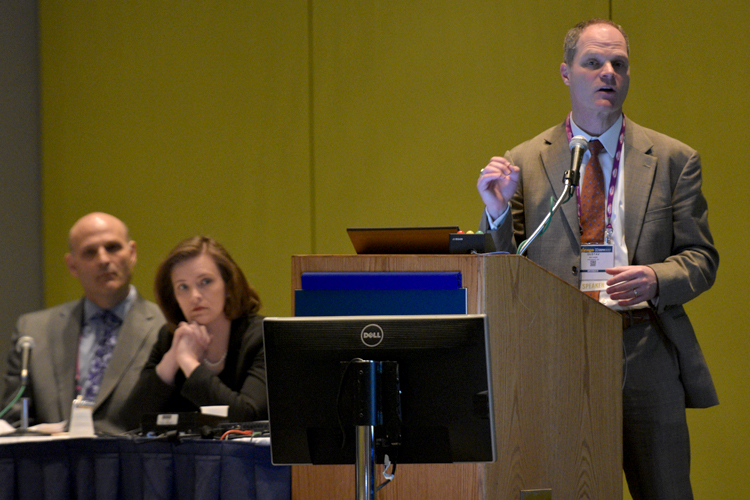
Medicare payment systems are undergoing perhaps the greatest change since Medicare was enacted in 1965 due to a law known as MACRA, the Medicare Access and CHIP Reauthorization Act of 2015.
While this new, value-based payment system won’t be fully implemented until 2019, physicians must begin participating in the program by Oct. 2, 2017, and begin reporting performance data to the Centers for Medicare and Medicaid Services (CMS) by March 31, 2018, explained Peter Margolis, MD, AGAF, speaking on Sunday at DDW® during a session sponsored by the AGA Government Affairs Committee, which he chairs.
“For now, 2017 remains what CMS calls a transition year with several pathways, some with very minimal reporting requirements, that allow clinicians to avoid an automatic 4 percent payment reduction in 2019 for nonparticipation,” said Dr. Margolis, clinical assistant professor of medicine at Brown University, Providence, RI.
MACRA reporting requirements apply to all health care providers who bill more than $30,000 a year to Medicare and provide care to more than 100 Medicare patients per year.
MACRA defines two reimbursement pathways: alternative payment models (APM) and a Merit-based Incentive Payment System (MIPS). APMs provide incentives to clinicians to provide high-quality and cost-efficient care. MIPS is an incentive program that rewards performance.
G. Anton Decker, MBBCh, chief clinical officer for Mercy Health, a network of hospitals in Wisconsin and Illinois, and president of Mercy Health Physicians, noted that MIPS uses a composite performance score that includes four weighted categories: quality, cost, improvement activities and advancing care information.
To qualify for an APM, physicians must meet a revenue-based standard and a benchmark-based standard, as well as quality requirements comparable to MIPS. Physicians must also use a certified electronic health record system.
A physician-focused payment model technical advisory committee (PTAC) was formed under MACRA to make recommendations to the secretary of Health and Human Services on proposals for physician-focused payment models. Last month, PTAC recommended three new physician-focused payment models, including Project Sonar, which is a payment model for the management of chronic inflammatory bowel disease.
Lawrence R. Kosinski, MD, MBA, AGAF, FACG, a gastroenterologist with Illinois Gastroenterology Group, Elgin, developed Project Sonar with colleagues to improve care coordination and outcomes for patients with Crohn’s disease. Clinicians using the SonarMD platform can track and manage patients between visits through ongoing electronic health assessment surveys. The results of a yearlong study among 500 pilot patients enrolled in Project Sonar showed significant reductions in hospitalization and the overall cost of care.
“The management of most serious chronic illnesses requires close involvement and collaboration between the primary care physician and the specialist,” Dr. Kosinski said. “Project Sonar shows how a specialty group, in partnership with a major payor, can advance overall patient health care management from fee-for-service to value-based care and, in the process, demonstrate cost savings with improved patient quality of life.”
More than 50 percent of the expenses incurred in the management of Crohn’s disease are for hospital services, Dr. Kosinski noted. High complication rates account for a 17 percent hospitalization rate among Crohn’s patients. Biologic medications account for more than 10 percent of total expenditures, while physician payments represent less than 4 percent of overall costs.
“Over two-thirds of the Crohn’s patients we studied did not have any physician interaction in the 30 days prior to hospitalization for a serious complication, resulting in unrecognized deterioration in patient symptomatology,” Dr. Kosinski said. “We need a Sonar system to engage patients between their face-to-face visits.”



